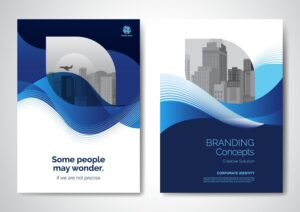Introduction
In the fast-paced world of digital marketing, creating SEO-friendly blog posts is the key to improving visibility and ranking higher on search engines. With the right strategies, your blog can attract organic traffic, engage readers, and build authority in your niche. Whether you’re a beginner or a professional, knowing how to structure, optimize, and publish your content matters more than ever in 2025.
Why SEO-Friendly Blog Posts Matter
Writing an SEO-friendly blog post is not just about inserting keywords. It’s about creating valuable content that search engines can understand and readers can enjoy. Google’s algorithm now prioritizes:
-
Relevance of content
-
User experience
-
Mobile optimization
-
High-quality backlinks
When you focus on these areas, your blog post stands a better chance to rank higher and stay competitive.

Step 1: Start With Keyword Research
Every SEO-friendly blog post begins with strong keyword research. Use tools like Google Keyword Planner, SEMrush, or Ahrefs to identify relevant keywords. Focus on:
-
Long-tail keywords for specific intent
-
Search volume and competition
-
User intent behind the search
For example, instead of targeting “blog writing,” you can target “how to write SEO-friendly blog posts in 2025.”
Step 2: Optimize Your Blog Title and Meta Description
Your blog title is the first thing users see in search results. Make it clear, engaging, and optimized with your target keyword. The meta description should also include the keyword and a call-to-action that encourages clicks.
Example:
Title: How to Write SEO-Friendly Blog Posts That Rank in 2025
Meta Description: Learn practical tips to write SEO-friendly blog posts in 2025 and boost your rankings effectively.
Step 3: Use Proper Heading Structure (H1, H2, H3)
Search engines love well-structured content. Divide your blog into H1, H2, and H3 tags to enhance readability. This helps readers scan quickly while allowing search engines to understand the hierarchy of your content.
For example:
-
H1: Blog Title
-
H2: Main Sections
-
H3: Sub-sections
Step 4: Write Engaging and Valuable Content
The heart of any SEO-friendly blog post is high-quality content. Ensure your writing:
-
Provides unique insights
-
Avoids fluff or keyword stuffing
-
Includes real examples or statistics (you can cite an Indian marketing study for credibility)
-
Uses simple, clear, and conversational language
Aim for at least 700–1000 words per blog to cover the topic in detail.
Step 5: Optimize On-Page Elements
To make your blog SEO-friendly, focus on:
-
Adding the keyword 5–6 times naturally
-
Using keywords in the introduction, subheadings, and conclusion
-
Including alt text for images
-
Internal linking to relevant pages
Example: For more guidance, you can contact our team for professional SEO content writing services.
Step 6: Add Internal and External Links
-
Internal links guide users to other pages on your website, increasing engagement.
-
External links to credible Indian sources or industry leaders boost trustworthiness.
This creates a balanced content structure that readers and search engines value.
Step 7: Optimize for Mobile and Readability
In 2025, mobile-first indexing dominates SEO. Ensure your blog is:
-
Mobile-friendly
-
Easy to read with short paragraphs and bullet points
-
Well-formatted with visuals
A reader who enjoys your content is more likely to stay longer, reducing bounce rate.
Conclusion
Writing SEO-friendly blog posts in 2025 requires a balance of creativity, structure, and technical SEO. Focus on keyword placement, readability, and valuable content that addresses user intent. When done right, your blogs won’t just rank — they’ll convert readers into loyal visitors.
Need expert help? Contact us today to create SEO-optimized content that ranks.
Explore more related articles to deepen your understanding
Best Fonts for Branding: Create a Lasting Visual Identity
SEO Content Writing: A Complete Guide for BeginnersDoes Google use Cloudflare
Content Writing Basics: A Beginner’s Guide to Effective Writing







